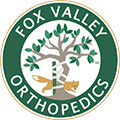To Learn More
(630) 584-1400


Osteoarthritis is an uncomfortable, degenerative condition affecting joints. Although it can occur across the entire body, “wear and tear” arthritis frequently affects the neck, hips, finger joints, and knees. Overall, osteoarthritis is less common in the elbow than it is in weight-bearing joints, but the degenerative disease can set-in when elbow tissue becomes worn or damaged.
Osteoarthritis symptoms appear when cartilage at the elbow joint becomes less effective cushioning the bones’ contact. Pain and inflammation result, sometimes limiting movement in the affected joint. As the degenerative condition worsens, elbow surfaces become rough, leading to bone spurs, nerve involvement and other complications.
Acute injury and age are principal risk factors for developing wear and tear arthritis. Under normal circumstances, the bones of the elbow are cushioned by cartilage and soft tissue, relying on muscles, tendons and ligaments to keep the structure aligned. The cartilage assists fluid movement, providing an even contact surface for bones.
Osteoarthritis occurs when cartilage in the elbow joint sustains acute damage or deteriorates, over time. As elbow arthritis progresses, the material loses its ability to cushion the contact, and bone surfaces no longer glide smoothly at the joint.
Possible causes of elbow arthritis include:
If you believe you have osteoarthritis, learn more about treatment options now. Call (630) 584-1400 to schedule an appointment.
To Learn More
(630) 584-1400Our specialists have the knowledge & experience to get you back to living life.
Providing excellent care, innovative surgeries, at up to 60% less out of pocket cost.
Welcome to Fox Valley Orthopedics’ patient portal.
Providing excellent care with the convenience of being close to home.
